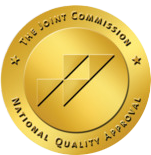What is a Telemedicine Platform? Essential Technology for Virtual Care
What is a telemedicine platform ?
A telemedicine platform is the technology infrastructure, services, and support that allows private, secure, HIPAA-compliant, and high-quality virtual medical consultations via videoconference.
Telemedicine platforms are used by hospitals, clinics, physicians, and telemedicine providers as the basis for interacting with patients and other providers.
How does a telemedicine platform enable virtual medical consultations ?
Virtual medical consultations are not like typical videoconferences. They must be HIPAA-compliant which means they must be secure and private. They must also provide clear high-quality video and audio of both clinician and patient. High-speed internet is required to ensure no interruptions or degradation of quality. A telemedicine platform provides the infrastructure and technology required for medical use, unlike mobile phones or regular videoconference technology.
What are the benefits of a telemedicine platform ?
An enterprise telemedicine platform should assist health systems in achieving some of the strategic goals they’ve set for their organizations. While a telemedicine solution should enable an organization to conduct virtual medical consultations, it should go beyond the basics to empower healthcare organizations to optimize organizational and clinical outcomes.
Healthcare executives who have immersed themselves in telemedicine strategy know that success lies beyond some of the obvious components such as clinicians and audio/video capabilities. While carts, cameras, physicians, and EMR integration are important, critical success factors need to include cross-departmental buy-in, implementation, scalability, and, most importantly, measurable outcomes.
How does a telemedicine platform drive clinical quality ?
Healthcare organizations that employ a telemedicine platform should be able to trust that the service and technology will enable the highest quality clinical performance.
For this, a telemedicine platform should be backed by tried and perfected workflows and telemedicine best practices that standardize care delivery encounter to encounter and across locations. The platform should also be evaluated on the marketplace leadership and medical expertise of the provider.
Proof points include:
- Joint Commission Accreditation
- URAC Telehealth Accreditation
- Robust and documented clinical quality process
- Clinical leadership with expertise in both specialty practice AND telemedicine
Clinical quality is driven by data insights; an enterprise telemedicine platform should enable healthcare organizations to pursue evidence-based clinical protocols with robust reporting, analytics, and benchmarking.
An enterprise telemedicine platform should help you elevate and standardize clinical performance across your system with aligned workflows.
How does a telemedicine platform help optimize outcomes ?
Telemedicine platforms must contemplate a variety of choices in real-time using business principles, healthcare organization requirements, and advanced algorithms and artificial intelligence:
- Who are the available clinicians?
- Are they appropriate for the case?
- Does the clinician have privileges at that location?
- Does the hospital or clinic prioritize using their own staff before outsourced clinicians?
- Do these priorities change depending on the time of day?
A telemedicine platform goes beyond mere connectivity to influencing certain variables throughout an organization to improve clinical outcomes. It should also drive operational efficiencies and optimize financial investment.
Why should a telemedicine platform be flexible ?
No two telemedicine programs are alike. The technology should be flexible enough to support a health care organization’s individual service lines and unique workflows. A flexible telemedicine platform allows an organization to choose how they implement and grow their telemedicine program, so it is important for the telemedicine platform to be highly configurable, and not “cookie-cutter”.
Specialty, site of service, level of acuity, and a host of other factors determine the shape and size of a telemedicine program. A flexible telemedicine platform should be able to integrate within an existing healthcare organization or physician practice without heavy lifting by internal technical resources.
What makes a telemedicine platform innovative ?
A telemedicine platform should be backed by a partner who invests heavily in innovation to deliver continual improvements to its partners and involves them in the innovation process. Dedicated client success team members should always be seeking feedback on potential new features and functionality. Clinical leadership should also drive improvements in the platform. Healthcare technology experts should implement changes in agile development practices.
When an organization chooses to implement a telemedicine program, there can be considerable investment in time, money, and resources: staffing, technology, training, and management. Having a partner who continually innovates brings more value to that investment.
To continue to propel telemedicine to the forefront of general medicine, it is the responsibility of technology providers to invest in the future of the industry at large. How? By continually providing next-gen solutions—software and hardware—that empower medical providers to push beyond the limits of how telemedicine is used today.
Conclusion
A telemedicine platform is the technology infrastructure, services, and support that allows private, secure, HIPAA-compliant, and high-quality virtual medical consultations via videoconference. Telemedicine platforms are used by hospitals, clinics, physicians, and telemedicine providers as the basis for interacting with patients and other providers. Key elements for a telemedicine platform are: Consult Coordination, Consult Delivery, Consult Satisfaction, and Consult Quality. A telemedicine platform should be flexible, scalable, innovative, and help drive clinical quality.




